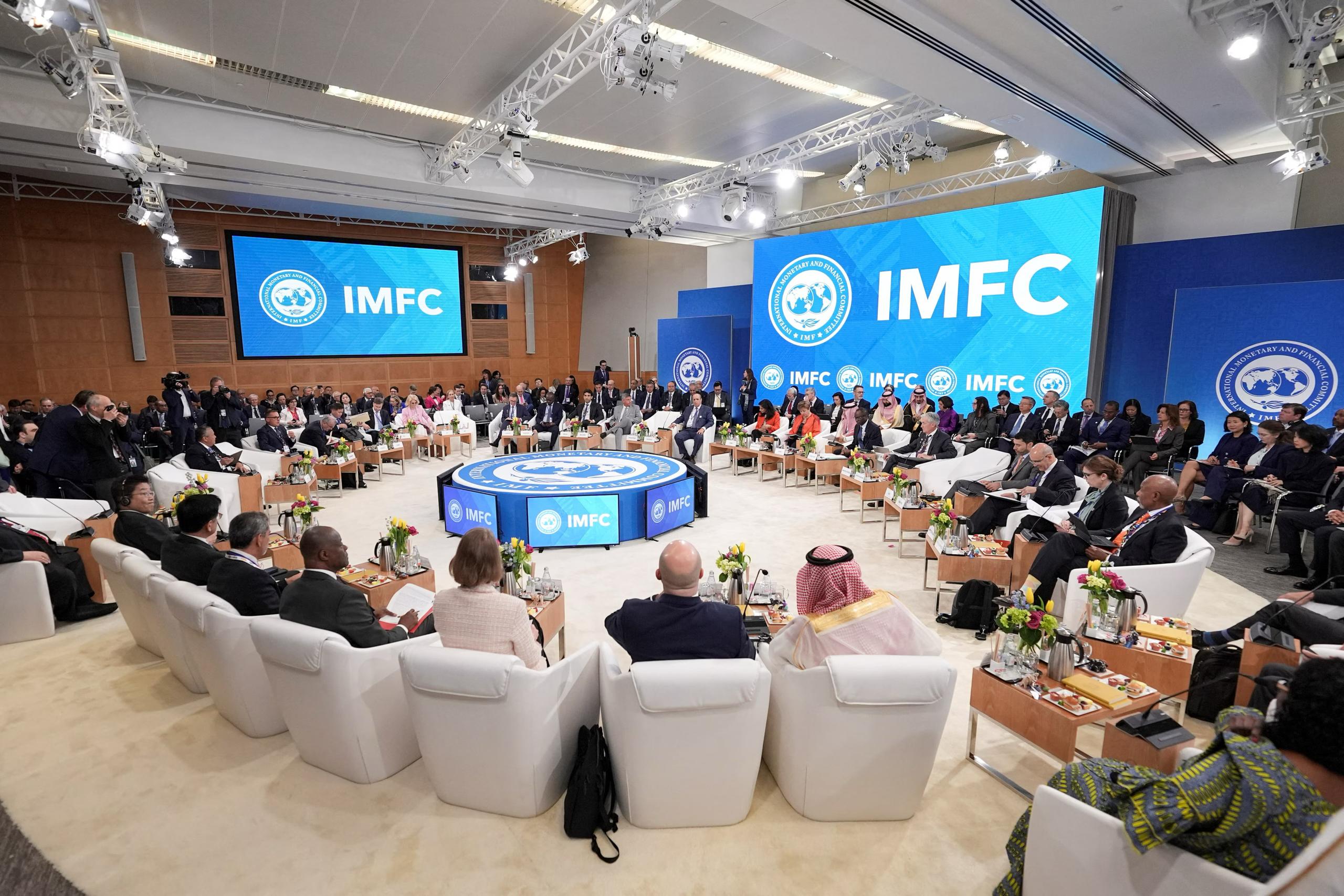The Global Inflation landscape is showing increasingly uneven patterns, according to the International Monetary Fund (IMF). While some nations are grappling with renewed price pressures, major exporters such as China are seeing inflation slow sharply due to weakening external demand.
This divergence reflects the complex post-pandemic recovery in a world still adjusting to shifting trade flows, geopolitical tensions, and changing consumer behavior. Economists warn that the uneven inflation trend could complicate global monetary policy coordination in the coming quarters.
Inflation Rises in Domestic-Driven Economies
In countries where domestic consumption remains strong, inflation is once again heating up. The United States and parts of Europe have witnessed persistent core inflation, particularly in services and housing sectors. Despite cooling energy prices, wage growth and consumer spending continue to keep inflation above the targets set by central banks.
Persistent Core Inflation Challenges Central Banks
Core inflation excluding volatile food and energy prices—has proven resilient in advanced economies. The U.S. Federal Reserve and the European Central Bank have expressed concerns about the slow pace of disinflation. Many analysts believe that interest rates will remain higher for longer, potentially into 2026, as policymakers remain cautious about declaring victory too early.
This persistence has strained household budgets and slowed real income growth. According to the IMF’s latest outlook, higher borrowing costs have also begun to dampen business investments, although consumer confidence remains relatively intact.
Service Sector and Wages Drive Price Pressures
The IMF noted that the service sector remains the key driver of inflation in advanced economies. Wage increases, combined with limited labor supply in key industries, are pushing costs higher. Countries like the United Kingdom, France, and the United States continue to experience inflationary pressures in transport, healthcare, and hospitality.
Experts argue that inflation driven by wages may take longer to subside, as employers remain under pressure to retain workers in a tight labor market. “We are seeing structural labor shortages that are not easily reversible,” an IMF economist commented.
Exporting Nations Experience Disinflation
While consumer-driven economies are seeing prices climb, exporting nations are confronting the opposite problem. The IMF emphasized that weaker global demand has led to Global Inflation disparities, especially among manufacturing-heavy countries.
China’s Slowing Demand Signals Broader Weakness
China’s inflation rate has hovered near zero in recent months, with producer prices even dipping into deflationary territory. The slowdown reflects waning international demand for manufactured goods, particularly from Europe and the U.S. As global consumption patterns shift, China’s export engine is losing steam.
Chinese officials have launched a series of stimulus measures aimed at revitalizing domestic consumption and stabilizing property markets. However, the IMF warns that such policies may not be enough to offset global headwinds. “The recovery in China remains fragile, with export orders and industrial output showing limited rebound,” the Fund stated.
Other Exporters Feel the Pinch
The ripple effect of slowing exports extends beyond China. Other major exporters such as South Korea, Germany, and Japan are also experiencing cooling inflation. Falling energy and commodity prices have provided temporary relief, but they also signal weaker global industrial activity.
In Japan, despite the central bank’s efforts to encourage inflation through monetary easing, the momentum has softened. Meanwhile, South Korea’s consumer price index showed minimal growth, echoing broader disinflationary trends in Asia’s export-driven economies.
Diverging Policies Complicate Coordination
As inflation patterns diverge, central banks across regions are taking differing policy paths. The IMF cautioned that this lack of synchronization could introduce volatility in global financial markets.
Advanced Economies Maintain Tight Policies
The United States, Canada, and much of Europe are maintaining tight monetary policies to suppress lingering price pressures. Higher interest rates have led to slower credit growth and higher debt service burdens, particularly for emerging markets reliant on dollar financing.
However, some analysts argue that maintaining restrictive monetary stances could risk tipping certain economies into stagnation. The IMF suggests a gradual recalibration, advising policymakers to remain data-dependent rather than fixed on predetermined rate paths.
Emerging Markets Take a Looser Approach
In contrast, emerging economies facing disinflation or recessionary risks are opting for rate cuts. China, Brazil, and Indonesia have eased monetary policy to stimulate growth, with the IMF noting that this could help offset global demand weaknesses.
Nevertheless, diverging policy trajectories increase the risk of capital flow volatility. Currency fluctuations and uneven credit conditions could pressure countries with high external debt, potentially triggering financial instability in vulnerable markets.
Global Inflation Outlook for 2026 and Beyond
Looking ahead, the IMF forecasts that Global Inflation will continue to show regional disparities through 2026. Advanced economies may achieve gradual disinflation, while export-heavy nations will likely remain stuck in low-inflation environments unless global demand rebounds.
Structural Shifts in Global Trade
The IMF report highlights that global trade dynamics have permanently shifted since the pandemic. Supply chain diversification, reshoring of manufacturing, and geopolitical decoupling have altered traditional inflation channels. For instance, Western economies are increasingly sourcing goods from Southeast Asia, Mexico, and India instead of China.
This reconfiguration has created both inflationary and deflationary pressures, rising costs in some regions due to production relocation, and declining prices elsewhere due to excess capacity.
Technology and Energy Transitions Influence Prices
Technological innovation and the energy transition are also reshaping inflation trends. The adoption of green technologies, while essential for sustainability, introduces transitional costs that can temporarily push prices upward. Meanwhile, digitalization continues to reduce operational costs in several industries, balancing long-term inflationary pressures.
Experts believe that these structural forces will define the next phase of global price behavior. “Inflation will not return to the pre-pandemic norm,” said IMF Chief Economist Pierre-Olivier Gourinchas. “We are entering a new equilibrium driven by fragmented globalization and technological acceleration.”
Policy Recommendations from the IMF
The IMF advises governments and central banks to maintain flexible and coordinated policy approaches. Fiscal policies should support monetary efforts by targeting vulnerable households while avoiding excessive stimulus that could reignite inflation.
Strengthening Multilateral Cooperation
The Fund reiterated the importance of multilateral cooperation, particularly in addressing trade imbalances and global supply chain vulnerabilities. Without coordinated action, inflation volatility could persist longer than expected, undermining recovery momentum.
Moreover, the IMF urged developed economies to consider the spillover effects of their monetary decisions on emerging markets. “Policy coordination is not optional, it is essential to global stability,” the report stated.
Preparing for Future Shocks
The IMF also called for enhanced preparedness against future shocks, such as climate disruptions or geopolitical conflicts, that could impact both supply and prices. Investing in resilient infrastructure, renewable energy, and digital trade systems is deemed vital for stabilizing the long-term inflation outlook.
The IMF’s latest assessment of Global Inflation underscores a world economy moving at different speeds. While consumer-driven nations struggle to cool prices, exporters face the challenge of weak demand. This divergence not only complicates policy alignment but also exposes deeper structural shifts in global trade and production.
As the international community navigates these imbalances, the IMF urges nations to remain adaptive, collaborative, and forward-looking. Readers can explore related analyses on global trade realignment and monetary strategies in the Economy section of Olam News.









